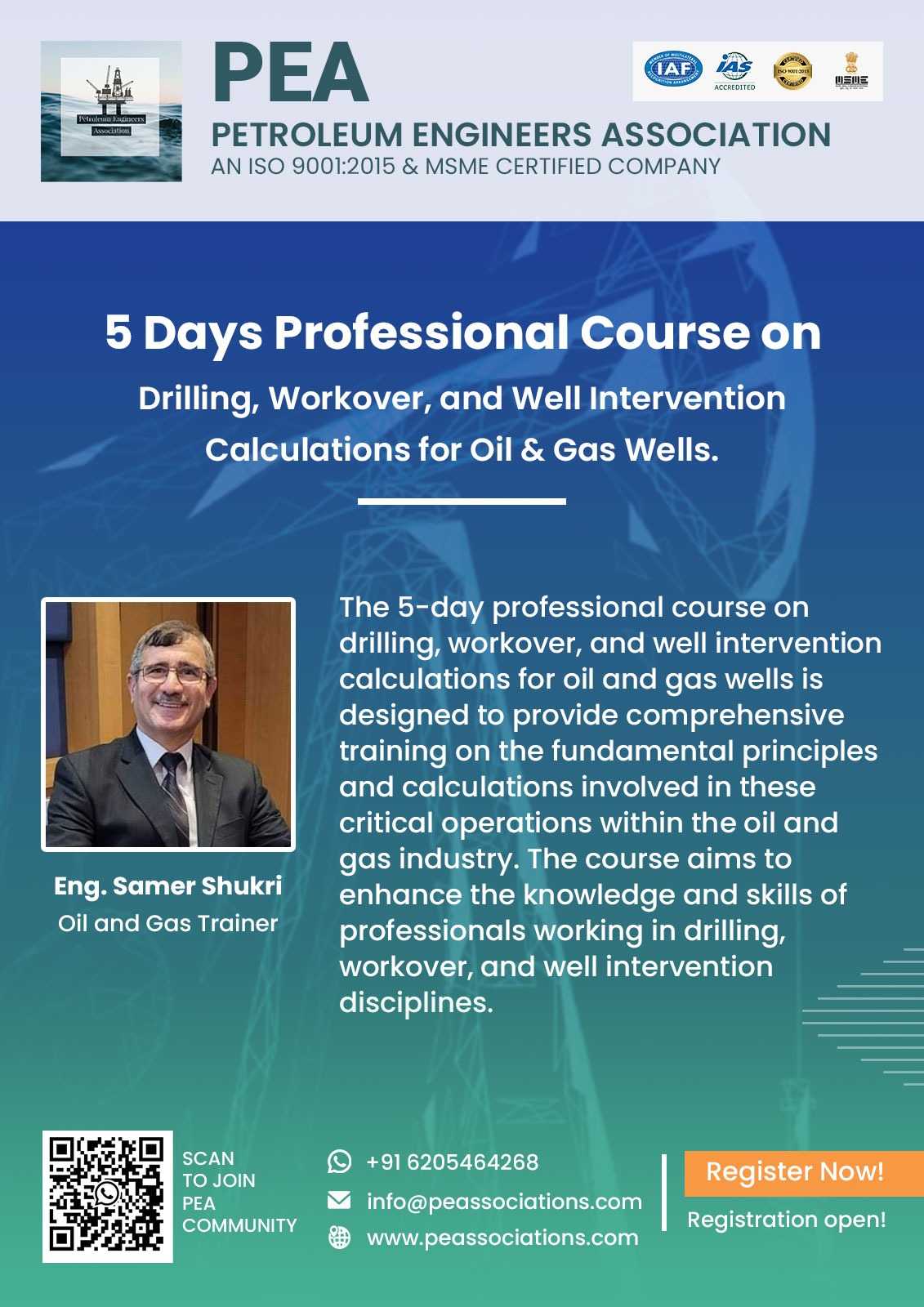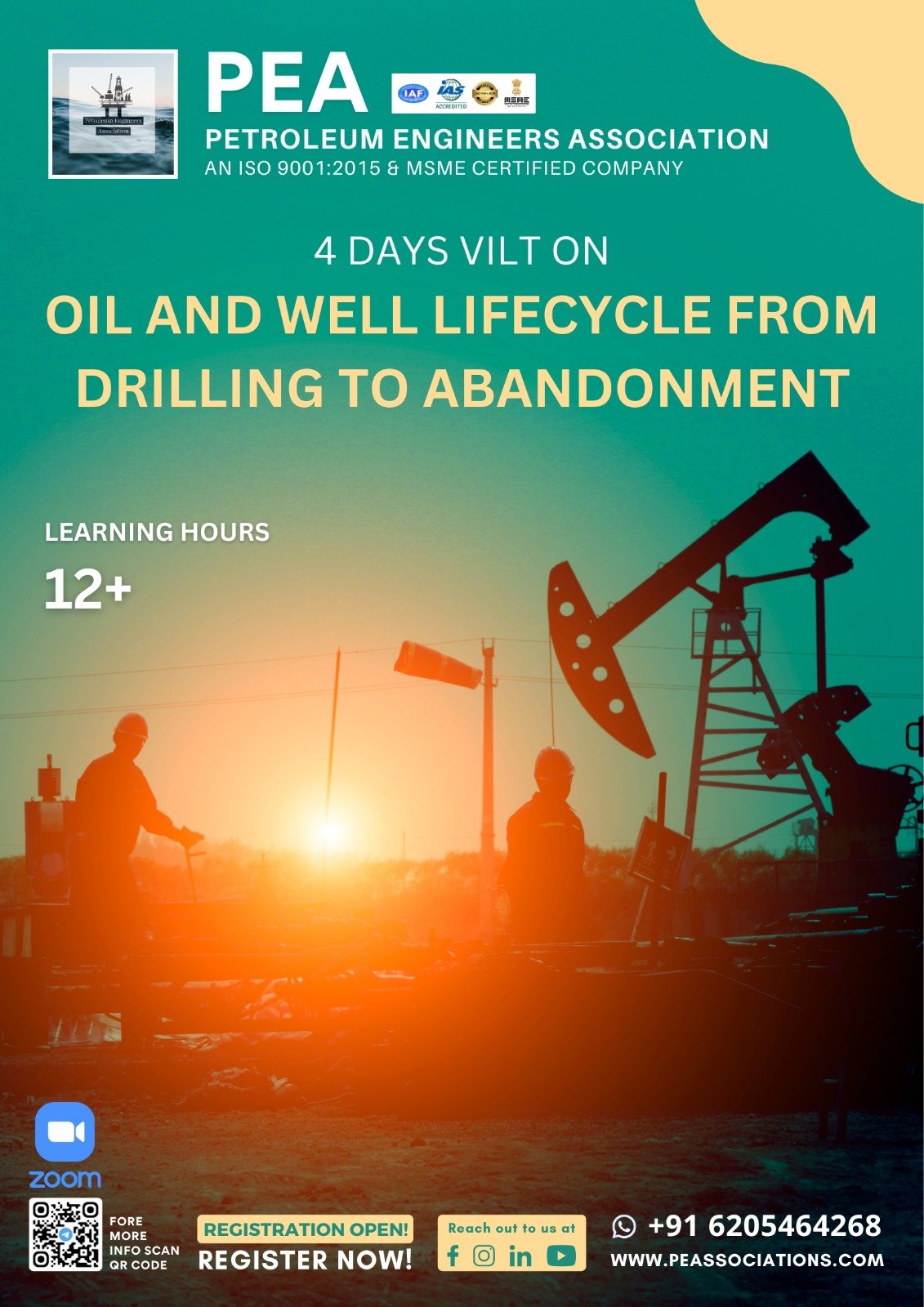Boost your team's skills and your budget! Enjoy group discounts for collaborative learning. Send an inquiry to info@peassociations.com.
Managed Pressure Drilling
Description
What Is MPD?
MPD, or Managed Pressure Drilling, is the use of specialized equipment (which can include such items as a Rotating Control Device, additional choke manifold, drill string check valves and fluid/solids control equipment among others) to control the pressure in a well being drilled. Some is positioned beneath the rig floor in the drill string and fluid return system, whilst other pieces can be located on deck. As a result it can help prevent catastrophic well control incidents.
Why Is MPD Used?
MPD is used for various reasons. It has the proven ability to make the drilling operation (an inherently dangerous process) safer, more efficient and cost effective. It allows for closer monitoring of the well and more accurate detection of any anomalies encountered and therefore enhanced response capabilities.
How Is MPD Used?
Managed Pressure Drilling relies heavily on the use of a Rotating Control Device (RCD), which is a major component in providing a closed, pressurized system. This allows for a constant bottom-hole pressure to be applied and also ensures much greater control over fluids flowing in and out of the well. Volume control is a major component of well control alongside keeping the bottom-hole pressure constant (equal to, or slightly greater than formation pressure).
Where Is MPD Used?
MPD is available on all rig types, from Land Rigs, Jack Up Rigs, Tender Rigs, Semi-Submersibles (DP / Moored) and Dynamically Positioned Drill Ships.
When Is MPD Used?
MPD is becoming more common place, and in some examples, a necessity, to meet the increasing demands and challenges of the drilling industry, both onshore and offshore.
It can be extremely useful if the well has very tight margins between letting in an influx (kick) or breaking down the formation, has a high risk of flowing due to the well conditions, or we are likely to experience problems such as differential sticking.
This VILT course aims to provide participants with a good understanding of the various aspects of managed pressure drilling. It also enables participants to gain knowledge of planning MPD operations, type of equipment and the equipment requirements for both onshore and offshore and MPD operations.
At the end of the VILT course, participants will be able to:
- Understand the variations in MPD
- Design MPD operations for various techniques
- Understand the engineering requirements of MPD
- Define MPD equipment requirements
- Understand operational and well control aspects of MPD
The Course Is Designed For Petroleum Engineers, Drilling Engineers, Project Engineers. HSE Engineers, Reservoir Engineers, Geoscientist... Rig Managers, Rig Supervisors. Operations Managers, Drilling Managers Drilling Superintendents, Drilling Supervisors, Rig Managers, Rig Superintendents, Contract Drilling Engineers. Mud Engineers, Mud Loggers, MWD / LWD Engineers, Directional Drillers.
What You Will Learn:
Day-1
• Introduction
• Geological Perspective
• Overview Of Formation Pressure
Day-2
• Managed Pressure Drilling Variants
• Managed Pressure Drilling Hydraulics
Day-3
• MPD Operational Procedures
• MPD Contingency Procedures
Day-4
• MPD Planning And Operations
• Case Study And Real Results
• Dynamic Fit And Dynamic Pore Pressure Evaluation
Day-5
• MPD Dynamic Well Control
• MPD Well Control Matrix
• Influx Management Envelope


















